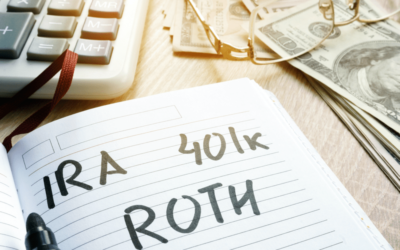Can I Invest in Multifamily Real Estate Syndications Using Funds From My IRA?

Yes you can, by transferring the funds from your IRA into a self-directed IRA. This article will explain how that works and how doing so will increase your investment options, allowing you to use those funds to invest in a multifamily real estate syndication.
Why would you want to do that? Regardless of the amount of money that you have been able to save, the gold standard is to have those savings tied to investments that are both stable and produce strong returns.
The main advantage of investing in a real estate syndication is the return. If you have money wrapped up in an IRA account that’s earning only 1-2% a year, you may wish to look into setting up a self-directed IRA (sometimes called a checkbook IRA) to allow you to invest in real estate.
Why A Self-Directed IRA?
Only the self-directed IRA can be set up to invest in real estate syndications. The tax code allows for this, and the key is to place your self-directed IRA account with a custodian that will accommodate investments for multifamily syndication. An IRA custodian is the financial institution responsible for record-keeping and IRS reporting requirements.
Multifamily, value-add syndications are a great type of investment for a self-directed IRA, they generate passive returns and then are liquidated for a bottom-line profit. That profit is usually taxed as a capital gain, but if it happens within your IRA, you won’t pay taxes until you actually retire and begin to withdraw income from that IRA.
You have to wait until you reach age 59½ to withdraw your funds, and the withdrawal will be included as ordinary income on your tax return. In the meantime, you have the right to invest in a real estate syndication deal or multiple deals, while maintaining the tax-deferral status of the IRA.

What is a Self-Directed IRA?
An IRA is an individual retirement account that allows the account owner to direct the account trustee to roll over all or part of their IRA and make investments in alternative assets such as real estate. Rolling the funds over from your IRA into a self-directed IRA gives you control of your own financial future. You control the investments instead of the company that handles your IRA.
With a self-directed IRA, you can create a Limited Liability Corporation, (LLC), and that entity invests in and holds your IRA funds. As the LLC General Manager, YOU can now handle the investing.

Tax Implications
Like a traditional IRA account, a self-directed IRA allows owners to defer taxes until retirement age.
When using a self-directed IRA for purchasing real estate, you can’t claim depreciation on property held within it. Also, there may not be a way to take advantage of operating losses as well.
Another thing to consider is income. Most people consider the income that is produced from their IRA as investment income. Occasionally, the IRS may categorize it as business income instead.
If it does, then that income can be subject to something called UBIT, or “Unrelated Business Income Tax” which can be taxed at rates as high as 39.6%.
UDFI, or “unrelated debt-financed income,” is primarily used in the context of IRA investments that generate income derived from debt-financed real estate or other property owned by the IRA. The UDFI is subject to UBIT.
You may be liable to this tax if your IRA participates in buying and selling a significant number of real estate properties in at least half of a year.
The best way to be certain about whether you owe UBIT is to talk with your tax professional.
A Roth Self-Directed IRA
You will eventually have to pay taxes on the tax-deferred income in your IRA when you take cash out. An alternative is to choose a Roth SDIRA. With a Roth SDIRA, there is no up-front tax break, it uses after-tax contributions, but you don’t have to pay tax on withdrawals in retirement. Your earnings will grow tax-free and when you take distributions from the account in retirement, you won’t owe any taxes on them.

Solo 401k
Making the choice between setting up a self-directed IRA or a solo 401(k) is an important decision. You need to consider all of the differences.
To be eligible to benefit for the Solo 401k Plan, investors must meet two eligibility requirements:
- The presence of self-employment activity.
- The absence of full-time employees.
If there will be debt on real estate investments you are much better off choosing a solo 401(k) over an IRA as solo 401(k)s are exempt from UDFI tax on leveraged real estate.
The Importance of A Good CPA
It is vitally important that you work with a good Certified Public Accountant (CPA) who understands the legal side of real estate investing. Getting the right tax advice is essential in making the best use of your retirement funds.
Setting up Your Self-Directed IRA
A Self-Directed IRA LLC may be funded by a transfer from another IRA account or through a Self-Directed IRA Rollover from an eligible defined contribution plan. Eligible defined contribution plans include qualified 401(k) retirement plans.
With the transfer, you do not receive the IRA assets. The transaction is carried out between the two financial institutions. In order for the IRA transfer to be tax-free and penalty-free, the IRA holder must not receive the IRA funds in a transfer. Rather, the check must be made payable to the new IRA custodian.
You can then instruct the new custodian that you select to request the transfer of IRA assets from your existing IRA custodian in a tax-free and penalty-free IRA transfer.
Once the IRA funds are either transferred to the new custodian, the new custodian will be able to invest the IRA assets into the new IRA LLC “checkbook control” structure.
Once the funds have been transferred to the new IRA LLC, you, as manager of the IRA LLC, would have “checkbook control” over your retirement funds so you can make traditional as well as non-traditional investments tax-free and penalty-free.
It is important to choose the right custodian, consider their experience, fees, and areas of expertise, and check out their rating with the Better Business Bureau.
A Word Of Caution
According to the Securities and Exchange Commission (SEC), you need to guard against criminals attempting to commit fraud against self-directed IRA account holders. Protect Yourself by:
- Not taking unsolicited investment offers.
- Asking lots of questions – be suspicious if these are not welcomed.
- Being wary of those promising unrealistic returns on your investment.

Why Multifamily Syndications?
It’s true that you have many options when it comes to investing. Some high-risk investments yield a high rate of return. Then there are safer investments but the rate of return is low. Multifamily real estate combines low-risk with generous returns.
The most common use of self-directed IRA funds is an investment in syndicated real estate deals. A syndication is a group of investors pooling their funds for investment. The investment is typically larger than one the investor could accomplish on their own. These real estate investments are professionally managed and you are not required to do any of the legwork.
Investment returns & distributions are returned to the self-directed IRA as cash. Accumulated cash distributions can later be invested in another investment.
Pros and Cons
From what we have discussed so far you can see that using a self-directed IRA to invest in residential or commercial real estate which is not allowed through regular IRAs has pros and cons.
Let’s get specific and list them, starting with the positives.
Pros
- Tax-free or tax-deferred account growth – With a self-directed IRA, you can invest in real estate as you normally would, but your gains are tax-free or tax-deferred, depending on the type of IRA account you use. There aren’t many other opportunities to invest in real estate in a tax-sheltered way.
- Control over your investments – As the owner of the account, you get to decide what to do with your investments. It’s possible to create a limited liability company (LLC) for your SDIRA. Doing this gives you checkbook control.
- Investing through an LLC can also provide other liability protections, though you should consult with a tax professional to better understand the LLC laws in your state.
- Potential For Higher Returns – A self-directed IRA real estate investment has the potential to earn a higher ROI than investing with traditional securities.
Cons
- Fees – The Internal Revenue Service requires that either a qualified trustee or a custodian hold assets on behalf of the IRA owner. This means costs that can eat up into your profits if you’re not careful.
- Complex Regulations – Your SDIRA could be disqualified as a tax-advantaged account if you don’t follow all of the IRS regulations carefully.
- UDFI – if your IRA owns property that has been financed, some of the income from the property is considered unrelated debt-financing income (UDFI), which is subject to taxes.

Are Self-Directed IRAs For You?
Those investors who choose to use self-directed IRAs do so to seek higher returns and greater diversification.
Self-directed IRAs may not be for everybody but if you want to take advantage of higher yields and less volatility you should seriously consider the possibility.
If you are creative and knowledgeable enough to use self-directed IRAs in the right way it could be a great option for you and your investment future.
Interested in investing with us? Simply click the link below to schedule a call with us now!

